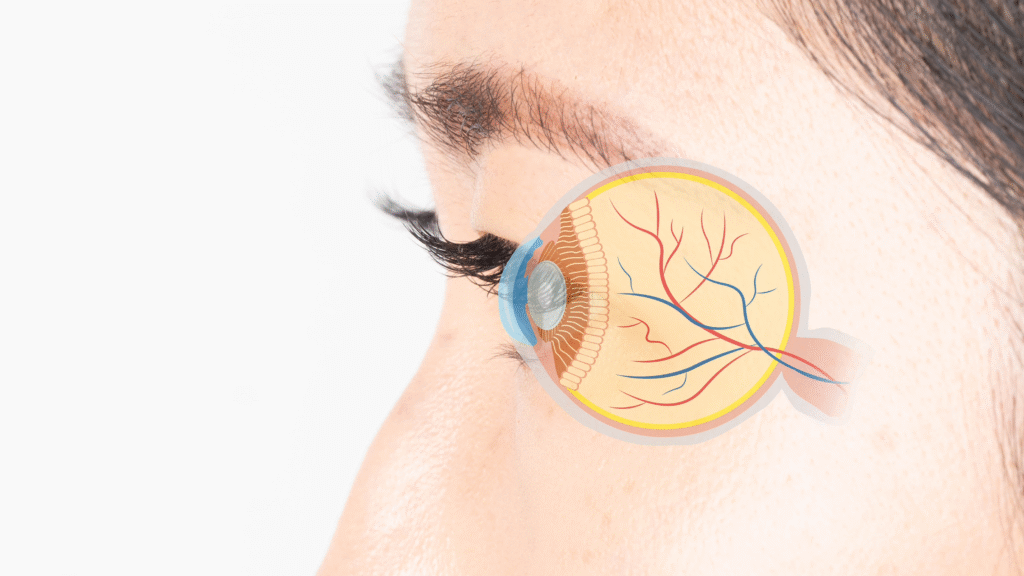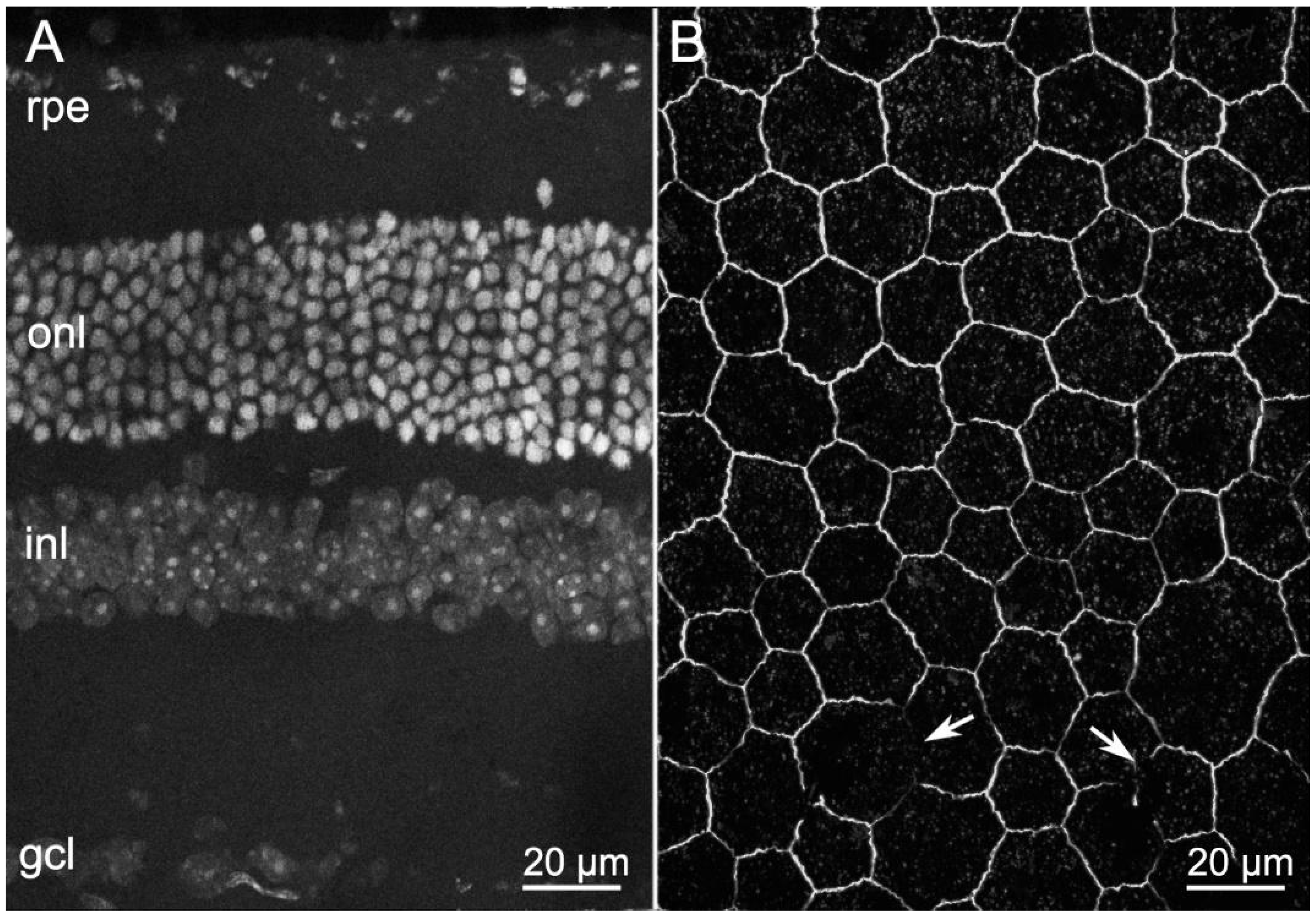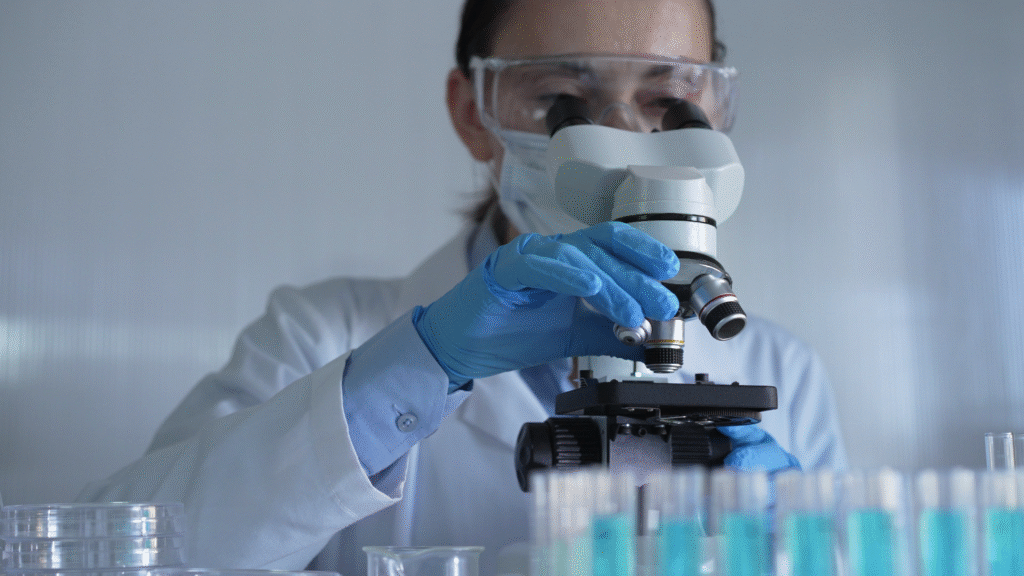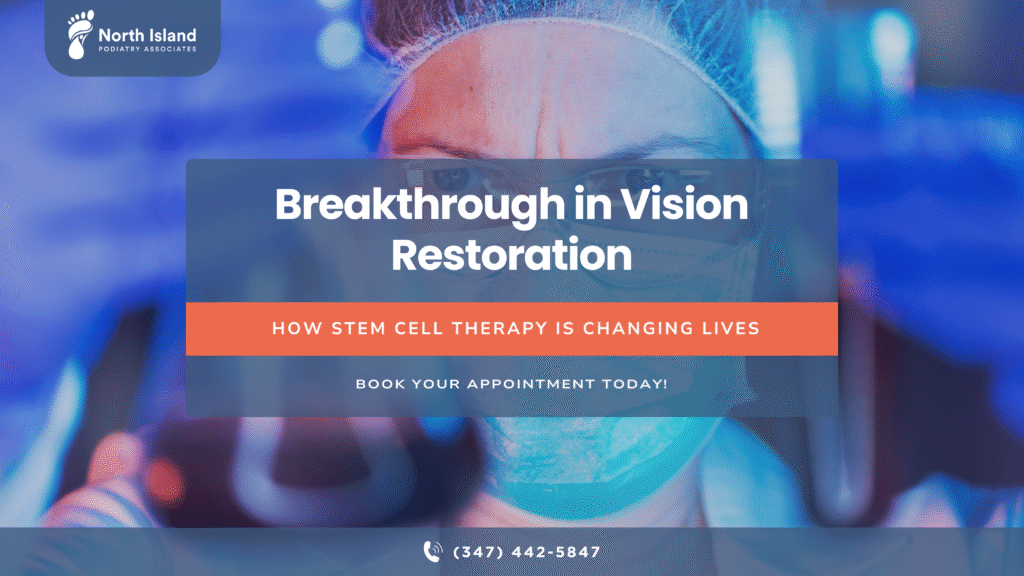Imagine a world where the faces of your loved ones blur into indistinct shapes, where reading a book becomes an insurmountable challenge, and the vibrant colors of life fade into a hazy grey. This is the reality for millions suffering from Age-related Macular Degeneration (AMD), a leading cause of vision loss in older adults. For years, the prospect of truly restoring lost vision seemed like a distant dream. However, a revolutionary wave of stem cell therapy vision restoration is now transforming that outlook, offering unprecedented hope.
At North Island Podiatry Associates PC, we believe in empowering our community with knowledge about overall health breakthroughs. While our expertise lies in comprehensive foot and ankle care, we recognize that advancements in medicine often have far-reaching implications. This blog post will delve into the remarkable advancements in AMD treatment breakthroughs, particularly highlighting the groundbreaking Japanese stem cell procedure that promises to revolutionize how we approach this debilitating eye condition. We’ll explore the science behind this incredible development and its profound implications for those living with macular degeneration.
Understanding Age-related Macular Degeneration (AMD)
- Dry AMD: This is the more common form, accounting for about 80-90% of cases. It occurs when light-sensitive cells in the macula slowly break down. It typically progresses gradually, leading to blurred central vision. Currently, there is no cure for dry AMD, though certain vitamin supplements (AREDS2 formula) can slow its progression in some individuals.
- Wet AMD: Though less common, wet AMD is more severe and can lead to rapid and significant vision loss. It develops when abnormal blood vessels grow under the retina and leak fluid or blood, damaging the macula. Current AMD treatment for wet AMD typically involves regular eye injections (anti-VEGF drugs) that aim to stop the growth of these abnormal vessels and prevent further leakage. While these injections can often stabilize or even improve vision, they don’t address the underlying damage to the retinal cells.
The devastating impact of macular degeneration lies in its attack on central vision, making everyday activities incredibly challenging and often leading to a significant loss of independence. This is why the search for a true macular degeneration cure has been so urgent……………………

The Power of Stem Cells: A Quick Primer
At the heart of this medical revolution are stem cells. In simple terms, stem cells are the body’s raw materials—cells from which all other cells with specialized functions are generated. They have the remarkable ability to divide and renew themselves over long periods and can transform into various specialized cell types in the body.
Among the different types, induced pluripotent stem cells (iPSCs) have emerged as a game-changer for stem cell therapy. Unlike embryonic stem cells, iPSCs are created by “reprogramming” adult cells (such as skin cells) back into an embryonic-like, pluripotent state. This means they can then be directed to develop into almost any cell type, including the specialized cells of the retina. The key advantages of iPSCs include their patient-specific nature (reducing the risk of immune rejection), their ethical advantages over embryonic stem cells, and their potential for large-scale production.
Japan’s Groundbreaking Contribution
The most significant strides in stem cell therapy vision restoration for AMD have come from Japan, spearheaded by the pioneering work of Dr. Masayo Takahashi and her team at the RIKEN Center for Biosystems Dynamics Research. Their groundbreaking research has transformed the landscape of AMD treatment breakthroughs.
In 2014, Dr. Takahashi’s team achieved a world-first: the successful transplantation of iPSC-derived retinal pigment epithelium (RPE) cell sheets into a patient with wet AMD. The RPE is a critical layer of cells located beneath the light-sensing photoreceptors in the retina. In AMD, these RPE cells become damaged and dysfunctional, leading to the deterioration of the overlying photoreceptors and subsequent vision loss.
The Japanese stem cell procedure involves taking a small sample of a patient’s own skin cells, reprogramming them into iPSCs, and then carefully guiding these iPSCs to differentiate into healthy RPE cells. These new RPE cells are then grown into thin, delicate sheets. During a meticulous surgical procedure, these healthy RPE cell sheets are transplanted into the patient’s eye to replace the damaged RPE layer. The hope is that these new, healthy cells will not only halt the progression of the disease but also support the remaining photoreceptors, potentially leading to vision loss reversal.

Initial clinical trials vision with a focus on safety have shown promising results, with no major adverse events reported and hints of vision stabilization or even slight improvement in some patients. This innovative approach offers a potential macular degeneration cure by directly replacing the diseased cells responsible for vision loss, a strategy that moves beyond merely slowing disease progression.
How Stem Cell Therapy is Changing Lives
The promise of stem cell therapy for vision restoration goes beyond scientific achievement; it holds the potential to profoundly impact the daily lives of millions. Imagine an AMD patient, once struggling to read headlines, now able to enjoy a book again. Or a grandparent, who could no longer make out the faces of their grandchildren, now sees their smiles clearly. This therapy offers the possibility of regaining independence, re-engaging with hobbies, and experiencing the world with renewed clarity.
This is not just about halting the relentless march of vision loss reversal but about the genuine potential for restoring what was thought to be permanently lost. This advancement in regenerative medicine eye care is not only groundbreaking for AMD but also opens doors for treating other retinal degenerative diseases, offering a new paradigm for ophthalmology.
Beyond the Eyes: Stem Cells and Regenerative Podiatry
The remarkable principles behind stem cell therapy vision restoration are not confined to ophthalmology. The very same regenerative power of stem cells is being harnessed in other fields of medicine, including podiatry, to address a wide range of debilitating foot and ankle conditions.
Just as RPE cells are damaged in AMD, the tissues in our feet and ankles—cartilage, tendons, and ligaments—can suffer from degeneration, injury, or chronic inflammation. Conditions like plantar fasciitis, Achilles tendinitis, osteoarthritis of the ankle, and even non-healing diabetic foot ulcers are often challenging to treat with traditional methods alone.
Podiatric researchers and clinicians are exploring how stem cells, particularly mesenchymal stem cells (MSCs) and iPSCs, can promote healing and regeneration in these areas. For instance:
- Cartilage Regeneration: Stem cells can be used to help regenerate damaged cartilage in arthritic joints of the foot and ankle, potentially delaying or even avoiding the need for invasive joint replacement surgery.
- Tendon and Ligament Repair: In cases of chronic Achilles tendinitis or ligament sprains that resist conventional treatment, stem cell injections can help accelerate tissue repair and reduce inflammation.
- Wound Healing: For complex, slow-to-heal wounds, especially those common in individuals with diabetes, stem cell therapy holds promise in promoting faster tissue regeneration and combating infection.
While these applications in podiatry are also evolving through clinical trials, the foundational science is shared with the breakthroughs seen in vision restoration. It speaks to the incredible potential of regenerative medicine to offer novel, less invasive, and more effective treatments across the entire body, allowing individuals to regain function and improve their quality of life.
The Road Ahead: Challenges and Future Outlook
While the advancements in stem cell therapy for vision restoration are incredibly exciting, it’s important to remember that these therapies are still relatively new and are undergoing rigorous testing. Challenges remain, including:
- Long-term Safety and Efficacy: Ongoing clinical trials vision (and in podiatry) are crucial to confirm the long-term safety of the transplanted cells and to definitively assess the extent of improvement and its durability.
- Scalability of Treatment: Producing patient-specific iPSC-derived RPE cell sheets is a complex and time-consuming process. Researchers are exploring ways to streamline production, including the use of “universal donor” iPSCs (cells genetically matched to a broader population) to make the therapy more accessible.
- Cost: As with many cutting-edge medical treatments, the cost of stem cell therapy for vision restoration (and its podiatric applications) is a significant consideration that will need to be addressed as the therapy moves towards wider availability.
Despite these challenges, the outlook is overwhelmingly optimistic. The relentless dedication of researchers like Dr. Masayo Takahashi continues to push the boundaries of what’s possible. The pioneering work in Japan has laid a robust foundation for the future of regenerative medicine eye care, and the shared scientific principles are extending that hope to other specialties, including the treatment of foot and ankle conditions. We can anticipate these treatments becoming more refined, accessible, and widespread in the coming years.

Conclusion
The journey towards effective vision loss reversal for Age-related Macular Degeneration has been a long one, but the advent of stem cell therapy vision restoration, particularly the groundbreaking Japanese stem cell procedure using iPSCs and RPE cell sheets, marks a pivotal moment. This represents a monumental leap forward in AMD treatment breakthrough, offering not just hope but tangible progress towards a future where the debilitating effects of macular degeneration can be overcome. Furthermore, the very same principles of regenerative medicine are now being applied to common podiatric problems, promising a future of enhanced healing and reduced pain for our feet and ankles. For millions facing the prospect of losing their sight or struggling with chronic foot pain, the light of science shines brighter than ever before.
North Island Podiatry Associates PC is committed to sharing the latest advancements in medical science that can improve lives. While our expertise lies in comprehensive foot and ankle care, we believe in empowering our community with knowledge about overall health breakthroughs. For any foot or ankle concerns, especially those related to diabetes or other systemic conditions, don’t hesitate to reach out to our experts.
Visit Us at One of Our Locations
Main Office:
Other Offices:
- 596 Pennsylvania Ave, Brooklyn, NY 11207
- 6410 8th Ave, Brooklyn, NY 11220
- 1414 Newkirk Ave, Brooklyn, NY 11226
- 5 Debevoise St, Brooklyn, NY 11206
- 1250 E 223rd St, Bronx, NY 10466
- 19616 Hillside Ave, Hollis, NY 11423
Contact Information
- Email Us: info@northislandpc.com
- Call Us: (347) 442-5847


